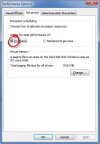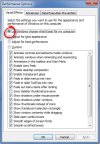I'd be surprised if a DM did need a swap (and even more surprised if having one speeded it up). Linux kernels use different virtual memory allocation algorithms than Windows systems and won't try to page to a swap device unless it really, really needs to.
Also, if you do have a swap file (or partition) on your disk, you could have to wait several seconds for the disk to spin up if/when the DM does decide to swap - or, worse, it keeps the disk spinning to keep the swap file's data structures up to date.
A quick
cat /proc/meminfo
of my DM800SE shows the following:
root@dm800se:~# cat /proc/meminfo
MemTotal: 137460 kB
MemFree: 6080 kB
Buffers: 1080 kB
Cached: 59116 kB
SwapCached: 0 kB
Active: 83720 kB
Inactive: 22812 kB
HighTotal: 0 kB
HighFree: 0 kB
LowTotal: 137460 kB
LowFree: 6080 kB
SwapTotal: 0 kB
SwapFree: 0 kB
Dirty: 0 kB
Writeback: 0 kB
AnonPages: 46304 kB
Mapped: 11116 kB
Slab: 15288 kB
PageTables: 492 kB
NFS_Unstable: 0 kB
Bounce: 0 kB
CommitLimit: 68728 kB
Committed_AS: 193580 kB
VmallocTotal: 262136 kB
VmallocUsed: 8228 kB
VmallocChunk: 253632 kB
Note the
MemFree line, shows there's not a lot of free memory. That's perfectly normal, as Linux kernels will allocate free mem to the buffers/cache in preference to not using it. As soon as it needs more Active pages, it'll dynamically reduce the size of the cache and free up memory for use.
So far as temp space goes, on Linux boxes temporary files are traditionally stored in the /tmp directory. On a DM this is mounted on the box's internal memory and will, if you put too much stuff there, fill up the box's memory - possibly to the point of crashing it.
However, as my doctor says when I complain that my leg hurts after a 10km run "then don't do it"

It's reasonable to expect that any Image or plugin implementor of any worth would NOT stash vast amounts of data in /tmp - as they'd get a reputation for producing crashy code of poor quality.


